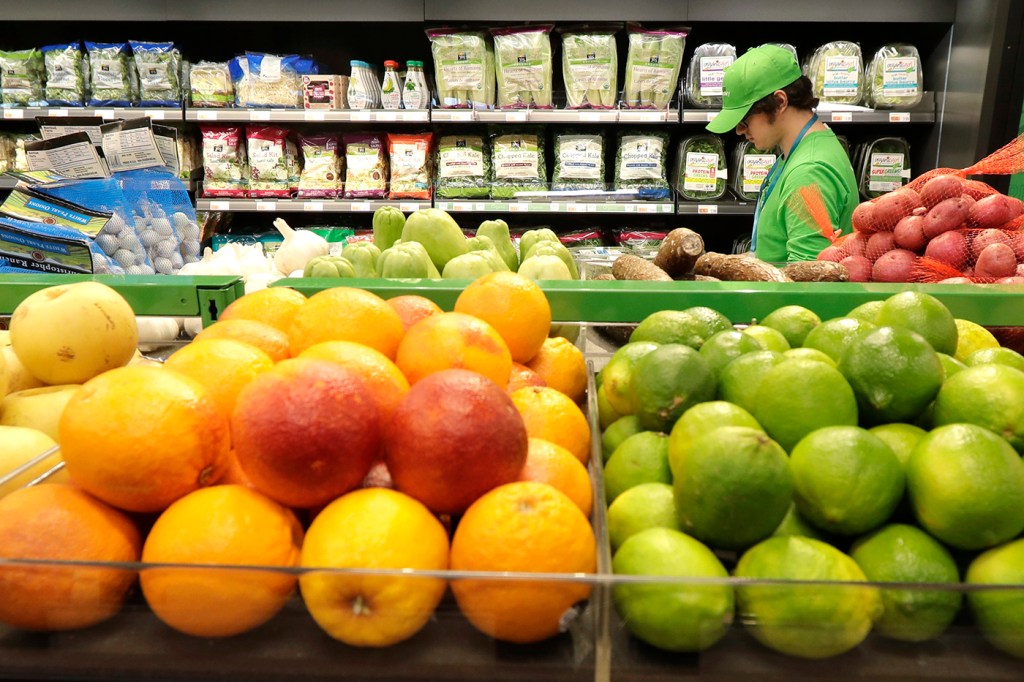Amazon’s new grocery store is watching our every move. But we asked for this.

In Amazon’s new grocery store, there are no registers, and you can walk out as soon as you’ve grabbed what you need. The catch? All the information about your purchase lives in sensors, computers, and the cameras hanging from the ceiling.
But to Christo Wilson, associate professor in Northeastern’s Khoury College of Computer Sciences, not much has changed. “Amazon knows a ton about you,” he says, and customers oblige for the sake of convenience and choice. These are factors traditional grocery stores, by offering unblemished apples and thirty kinds of crackers, have already conditioned people to expect, fellow professor Christopher Bosso says. “The enemy is us.”

Christopher Bosso Professor of Public Policy; Associate Director, School of Public Policy and Urban Affairs and assistant professor, Christo Wilson. Photo courtesy Christopher Bosso and Photo by Matthew Modoono/Northeastern University
On Tuesday, Amazon opened its first grocery store, Amazon Go Grocery, which, like its grab-and-go outposts, forgoes interactions between employees and customers, including checkout. What makes this new store different relates to unpackaged produce, something the earlier convenience stores didn’t offer: To accurately track things like how many avocados you actually walk away with after handling 10 times that amount, the company has implemented more surveillance and computing power.
But as Wilson points out, since Amazon’s online marketplace already tracks what you do, “going into the store doesn’t give them all that much more information.” The convenience of skipping the checkout line comes at the expense of privacy, but so does shopping through Amazon at all.
Amazon’s bet that customers will accept this compromise may pay off, says Bosso, professor and associate director of the School of Public Policy and Urban Affairs, since the convenience the company promises is already something people expect—and receive—from their current grocery providers.
“We want what we want when we want it,” he says.
As Amazon has ridden trends of desirability and convenience, it has occasionally contradicted the goals it originally aligned with, aligning itself instead with the models it intended to replace, when it proves beneficial. Amazon Go Grocery, therefore, is nothing new.
“Now you don’t have to have some guy delivering the stuff to your door with Amazon Prime; you can just go into your Amazon Go store and pick it up yourself, which is the great irony here,” says Bosso. “It’s like Amazon creating a bookstore—which they did.”
Amazon customers grew accustomed to the expedited delivery of, among other things, books. Audiobooks, too. But, says Bosso, “there is a percentage of the population that does not want to have its stuff delivered; it wants to pick it up. And Amazon’s really good for that.”
So around the time that sales started to climb for both physical and digital books, what was Amazon’s move? Building a bookstore.
Standard grocery stores similarly appease consumers’ desire for convenience, variety, and quality, he says. “The food system’s there to give it to us—but at what cost?”
“You’re going to get a lot of waste in the system; everything’s got to be prepackaged,” says Bosso. “That’s not just Amazon.”
However, Bosso points out that Amazon is uniquely positioned, with its large user base that already expects consistent quality and delivery, to exacerbate this problem, as well as another related one.
“I think it’s just going to accelerate that sort of overemphasis on uniformity in produce that we already see,” Bosso says. “Amazon being what it is, it’s going to put even more pressure on that system. But again, Walmart has already done that.”
In that sense, Amazon is capitalizing on a trend, says Bosso, one that promises pears of identical size and dinners that need only be reheated, neither one requiring compromise or much thought on the part of the customer.
“This kind of model is very good for people who are making a last-minute decision about something for dinner tonight, and they don’t want to have to go on Amazon and do an order—they just want to go into a store and pick up stuff, which is what people traditionally did.”
But by eliminating traditional cashiers, a feature the company already debuted in its Amazon Go stores in 2018, Amazon offers to even further streamline this traditional activity.
After all, what Amazon can’t offer in low prices (a recent study showed Amazon charges more than Walmart for such items as water bottles and Xbox Ones) it can offer in convenience (Amazon offers free two-day shipping for Prime members, while Target and Walmart only offer expedited shipping on orders of $35 or more). And what Amazon offers in convenience, it collects in return: $59 to $119 per year, times 150 million.
As Bosso says, “those folks at Amazon, if nothing else, are not stupid.”
For media inquiries, please contact media@northeastern.edu.





